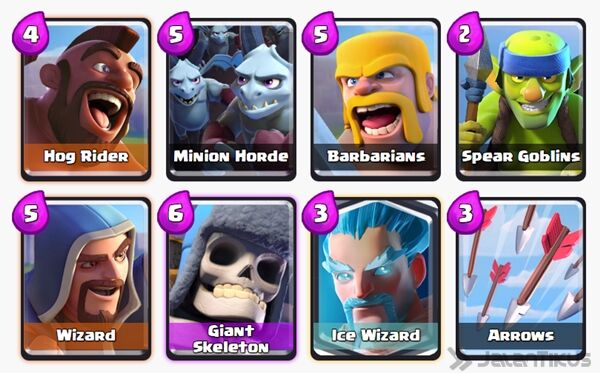
Anyone familiar with modern Burn should be well acquainted with Soul-Scar Mage and Monastery Swiftspear. Not to mention that having the “ wizard” subtype is important for ensuring earlier double or triple spell turns thanks to Wizard’s Lightning. You have an additional haste threat that works as a midgame top deck once the game reaches that point. This 1-drop excels in the midgame as a 2/2 with haste once you have two instant or sorceries in your graveyard. As a 1/2 without haste, you can lean on Lavarunner while using haste creatures on turns 2 and 3 to maximize damage. Ghitu Lavarunner is the weakest 1-drop creature on turn 1 but it quickly scales to match the other creatures. Connect a third time and often the opponent won’t be able to weather the flurry of burn later. You often account for one less spell you need to draw to win if you can connect twice. This is an important break point for the 1-drops in the list since each chunk of three damage is worth about one card in a Burn deck.


You’ve got an extra 1-drop in this deck to add extra pressure and consistency to your early turns.Īll the creatures are either 2-power, have prowess, or can grow to 2 power. 1-Dropsīurn decks traditionally have twelve 1-drop creatures with a flex slot for a 13th. With twenty creatures, 21 spells, and 19 lands, the modern Pioneer Burn deck keeps the memories of Burn decks past while adapting to the changes of the 20 format. This list is just a little off the 20/20/20 plan thanks to Lurrus’ cost restriction. There was an adage about Burn decks years ago that said the perfect balance was twenty creatures, twenty spells, and twenty lands. Ghitu Lavarunner x4 Monastery Swiftspear x4 Soul-Scar Mage x4 Zurgo Bellstriker Viashino Pyromancer x4 Eidolon of the Great Revel x3 Instant (16)īoros Charm x4 Lightning Strike x4 Play with Fire x4 Wizard’s Lightning x4 Sorcery (4)īattlefield Forge x4 Den of the Bugbear Inspiring Vantage x4 Mountain x5 Ramunap Ruins Sacred Foundry x4 Sideboard (14)Ĭhained to the Rocks x3 Kari Zev’s Expertise Roiling Vortex x3 Satyr Firedancer Searing Blood x4 Soul-Guide Lantern x2 The Strategy This latest change brings me to the decklist as it exists today: Boros Burn. Gone were the days of Goblin Chainwhirler and planeswalker threats like Chandra, Torch of Defiance. This transformed most of the deck into a powerful shell with some flexibility that still consistently punished midrange decks and any stumbles. Lurrus forced players to lean out their decks and commit to playing two colors, specifically white and red.

The companion that changes the landscape of every format it graces.

So what did Ikoria bring to the table to raise the level of Burn? Lurrus of the Dream-Den. But it wasn’t until Ikoria that Burn became an on-and-off tier 1 archetype for months. Pioneer is no different burn decks have existed since the format’s inception. These decks exist in every format, mixing powerful and efficient creatures with burn spells to win from disadvantaged board states. Spells like Lightning Bolt that can target a player often finish out games where creatures did most of the legwork but fell just short of 20 damage. Players have been chasing the efficiency of “1-mana, deal three damage to any target” since Alpha. Lightning Bolt is one of the most iconic cards in all of Magic. Eidolon of the Great Revel | Illustration by Cyril Van Der Haegen


 0 kommentar(er)
0 kommentar(er)
